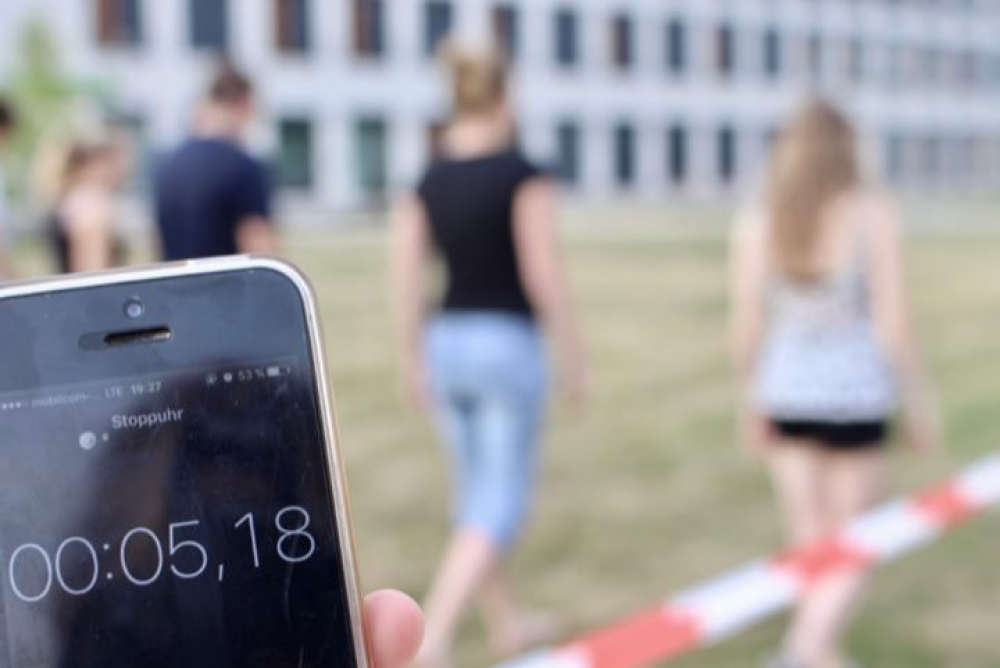The task in the "Mobile Media" course was to design a navigation system for a special application that works without typical output methods such as (spoken) language, display, etc.

We decided to develop a navigation system for police units to help them find missing persons and/or criminals faster through more structured searching. This application made it even more important for us to develop a system without a display, so we decided on navigation through vibration motors at six different locations, which we integrated into the belt that every police officer already wears while on duty.
A Hundertschaft is a German police unit consisting of around 100 officers. They are used for riot control, crowd management, and other special operations.
When searching for missing persons, Hundertschaft units typically use systematic search methods such as the quadrant method, circle method, strip method, or grid method to ensure the entire area is searched thoroughly.
These methods can be adapted based on factors such as terrain and weather conditions, and it is important for the Hundertschaft units to work closely together and remain dedicated to covering all areas and finding any clues that may lead to the discovery of the missing person.

There are many problems that can arise when searching for missing persons.
Some of these include:

A non-visual navigation system could potentially help increase navigation
through terrain when searching for missing persons. For example, using a
GPS-based system or a system that utilizes vibration patterns could provide an
additional layer of navigation beyond relying solely on visual cues. This could
be especially useful in situations where visibility is poor or when the search
area is large and difficult to navigate.
Here are some of our ideas of how to increase this specific kind of navigation:


Since police officers should have their hands and eyes free during a search, we decided to integrate the navigation unit into a garment that the officers wear anyway during their work, in order to avoid additional burden during the search.
We had several garments in mind. In the end, however, we decided against shoes and the protective vest/shirt due to, among other things, the few nerve tracts in the back and the inaccurate directional information that would be possible with integration in the soles of the shoes. What seemed to make sense to us, however, was the belt. Here, thanks to the increased nerves in the hip area, we can distinguish exactly from which direction the navigation impulse came and, at the same time, due to the anatomy of a belt that reaches once completely around our hips, we can send and receive impulses 360° around us.

We started our first user test and found out that the belt in combination with our motors was too thick to feel the impulses coming from the vibration motors while running.
However, after some research, we found that there are smaller and stronger vibration motors than the ones we initially used. These could be easily sewn into the belt later, in the final product.
However, to be able to test our concept further at first, we sewed weaker vibration motors into a thinner, self-sewn belt. We equipped these vibration motors with a Bluetooth receiver, which we could use for test purposes to take over the navigation with the help of a remote control.



In a user test, in which we had test persons search Post It's, we subsequently found that the search could be made significantly faster and more effective with the help of such a navigation.

Mobile Media
Semester 2
SS 2017/2017
Unser Research
Synthesis
Conception
Ideation
Hardware Prototyping
Arduino Prototyping
User Testing